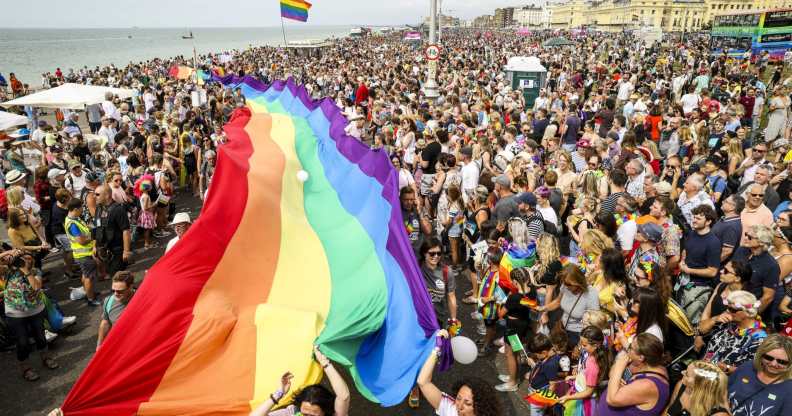This is what the 2021 census is really asking about gender, sex and sexuality

Brighton Pride in 2019. (Getty)
Brighton Pride in 2019. (Getty)
The 2021 England and Wales census is asking the LGBT+ community about their sexual orientation and gender identity for the very first time.
The once-in-a-decade survey, run by the Office for National Statistics (ONS), provides a comprehensive picture of everyone living in England and Wales, and helps local and central government make decisions based on the needs of households.
This year, the ONS will finally collect information on LGBT+ demographics, to “help organisations to combat any inequalities these groups may face and show where services are needed”.
The LGBT+ census questions, particularly a question on gender identity, has sparked misinformation online and rumours have swirled among anti-trans groups that questions on gender identity will “erase” questions on sex.
This is not true. In reality, the 2021 census is making history by asking the public about their gender identity and sexual orientation, while still including a question on sex.
What are the 2021 census questions on gender and sexuality?
The question on sex is mandatory for everyone, and requires an answer of “female” or “male”.
Guidance for the question advises those unsure of how to answer to use the sex recorded on their birth certificate or, if they have one, gender recognition certificate.
However, the question is accompanied by a note which says: “A question about gender identity will follow later on the questionnaire.”
Later in the survey, respondents are asked: “Is the gender you identify with the same as your sex registered at birth?” Trans people who answer “no” can further specify their gender here, for example writing in “trans woman”, “trans man”, “non-binary person”, or whichever term best describes them.
This question is voluntary and only for those aged 16 or over.
A question on sexual orientation asks people to tick one of the following boxes: “straight or heterosexual”, “gay or lesbian”, “bisexual”, “other sexual orientation”. There is a space provided to write in any orientation that doesn’t appear on the form, such as pansexual.
This question is also voluntary and for people aged 16 and over, and individuals can request a separate questionnaire to complete so that others in their household are not able to view their answers.
What is a census and when was the last one?
The census has taken place every decade since 1801, except for 1941 during Second World War.
The 2021 census is on Sunday, 21 March, but people can respond as soon as they receive their code. Results of the survey will be available in 2022.
During the last census, in 2011, the option to complete the survey online was first introduced. This year, the census will be mostly run online, however paper forms will be available on request.
Households will receive a letter this month containing a unique access code, allowing to complete the form on computers, tablets, phones or laptops.
One census form must be completed per household.
Is the census mandatory?
In short: yes, all households in England and Wales are required to complete the census by law to reflect their household circumstances on 21 March.
If a household fails to complete the census, it will be visited by a field officer who will encourage residents to fill it in. This year, field officers will wear PPE, maintain social distancing and will not enter people’s homes.
Those found guilty of refusing to complete the census, or of intentionally filling it out with incorrect information, face a maximum fine of £1,000 and a criminal record.
If brought to court, an individual will still be given the chance to complete the census, in which case they will be classed as a “conversion” and will not face charges.
In 2011, according to the New Statesman, 157 prosecutions made it to court, which led to 120 convictions.
However, although the census as a whole is mandatory, some questions on the form are voluntary, including questions on gender identity and sexual orientation.

